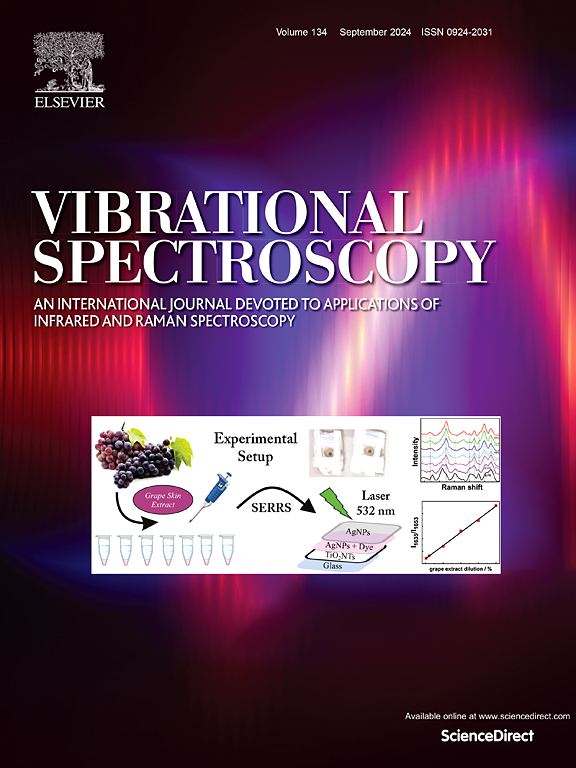SERS analysis of saliva and its key components: The effects of various collection methods, sample dilution, excitation wavelengths, and enhancing substrates
IF 3.1
3区 化学
Q2 CHEMISTRY, ANALYTICAL
引用次数: 0
Abstract
Recently, human saliva has become a subject of research as an excellent material for patient-friendly diagnostics. An increasing number of diagnostic tests utilize saliva due to its easy and noninvasive collection, eliminating the patient's stress. Simultaneously, developing Surface-Enhanced Raman Scattering (SERS) spectroscopy offers new possibilities for analyzing saliva's composition. Saliva is a complex biological material; many factors influence its composition, including medication use, diseases, stress, hormone levels, diet, age, and hydration. This complexity raises the question of whether it is possible to observe and definitively attribute changes in specific substances through SERS spectra. One of the key questions we posed is how the SERS spectrum will change with an increased level of α-amylase 1 A (AMY1A), an enzyme marker of acute stress. AMY1A forms complexes with proline-rich proteins (PRP). Thus, we examined whether similar spectral changes are observed with a PRP level increase in saliva. Another focus was lysozyme C (LYZ C), a nonspecific marker of infectious diseases. We examined how increased levels of LYZ C affect SERS spectra, particularly considering its sensitivity to changes in the ionic composition of saliva and its complexation with PRP and lactoferrin (LF). Moreover, we explored whether the albumin (HSA) level, which plays a vital role in regulating osmotic pressure, influences LYZ C activity and how it is manifested in SERS. Furthermore, we investigated the effect of saliva dilution and collection methods on SERS spectra. We searched for correlations with significant components such as AMY1A, HSA, LYZ C, LF, and Poly-L-proline (PLP is an analog of PRP). We showed the role of gold (Au) and silver (Ag) substrates, comparing the spectral differences. Solving the issues is crucial for the ability of SERS techniques to detect and/or monitor biomolecules in saliva and can lead to significant advancements in noninvasive diagnostics.
唾液及其主要成分的 SERS 分析:各种采集方法、样品稀释、激发波长和增强基质的影响
最近,人类唾液作为一种对患者友好的诊断材料而成为研究的对象。越来越多的诊断测试利用唾液,因为它容易和无创收集,消除病人的压力。同时,表面增强拉曼散射(SERS)光谱的发展为分析唾液成分提供了新的可能性。唾液是一种复杂的生物材料;许多因素影响其成分,包括药物使用、疾病、压力、激素水平、饮食、年龄和水合作用。这种复杂性提出了一个问题,即是否有可能通过SERS光谱观察和明确地归因于特定物质的变化。我们提出的关键问题之一是SERS谱如何随着α-淀粉酶1 A (AMY1A)水平的增加而变化,AMY1A是急性应激的酶标志物。AMY1A与富含脯氨酸的蛋白(PRP)形成复合物。因此,我们研究了唾液中PRP水平升高是否观察到类似的光谱变化。另一个焦点是溶菌酶C (LYZ C),一种传染性疾病的非特异性标志物。我们研究了LYZ C水平的增加如何影响SERS光谱,特别是考虑到它对唾液离子组成变化的敏感性以及它与PRP和乳铁蛋白(LF)的络合。此外,我们还探讨了在调节渗透压中起重要作用的白蛋白(HSA)水平是否影响LYZ C活性及其在SERS中的表现。此外,我们还研究了唾液稀释度和收集方法对SERS谱的影响。我们搜索了与AMY1A、HSA、LYZ C、LF和poly - l -脯氨酸(PLP是PRP的类似物)等重要成分的相关性。我们展示了金(Au)和银(Ag)衬底的作用,比较了光谱差异。解决这些问题对于SERS技术检测和/或监测唾液中的生物分子的能力至关重要,并且可以导致无创诊断的重大进步。
本文章由计算机程序翻译,如有差异,请以英文原文为准。
求助全文
约1分钟内获得全文
求助全文
来源期刊

Vibrational Spectroscopy
化学-分析化学
CiteScore
4.70
自引率
4.00%
发文量
103
审稿时长
52 days
期刊介绍:
Vibrational Spectroscopy provides a vehicle for the publication of original research that focuses on vibrational spectroscopy. This covers infrared, near-infrared and Raman spectroscopies and publishes papers dealing with developments in applications, theory, techniques and instrumentation.
The topics covered by the journal include:
Sampling techniques,
Vibrational spectroscopy coupled with separation techniques,
Instrumentation (Fourier transform, conventional and laser based),
Data manipulation,
Spectra-structure correlation and group frequencies.
The application areas covered include:
Analytical chemistry,
Bio-organic and bio-inorganic chemistry,
Organic chemistry,
Inorganic chemistry,
Catalysis,
Environmental science,
Industrial chemistry,
Materials science,
Physical chemistry,
Polymer science,
Process control,
Specialized problem solving.
 求助内容:
求助内容: 应助结果提醒方式:
应助结果提醒方式:


